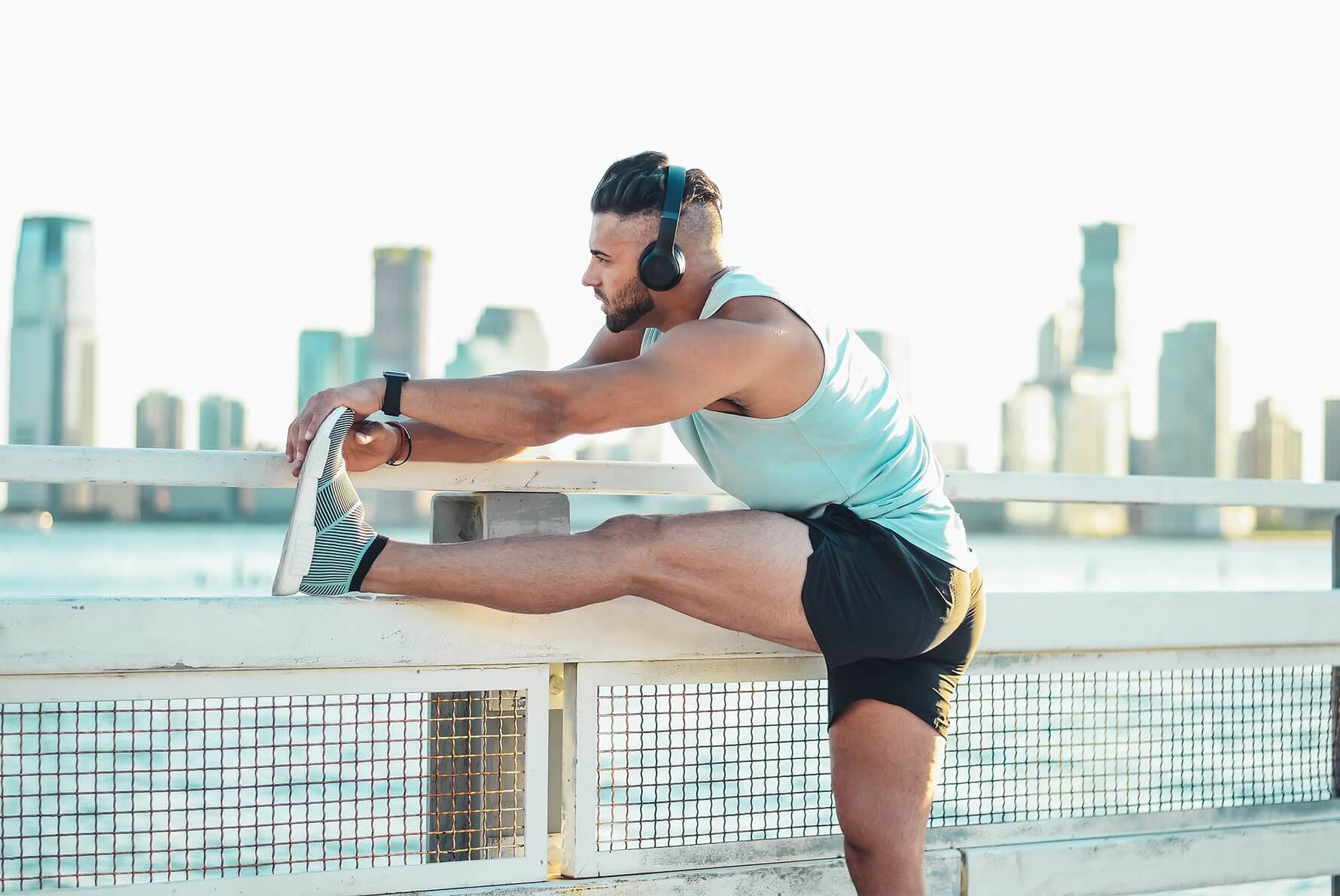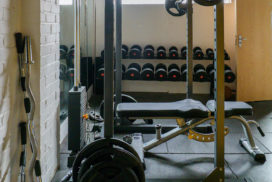Stretching is an underrated aspect of fitness and building muscle. Neglecting stretching and mobility training is one of primary causes of injury from working out.
Mobility increases the range of motion of your joints and stretching increases the lengths of muscles. Increasing both mobility and flexibility will improve your workouts, recovery, and strength. The difference between mobility and flexibility is that mobility improves the ability of the body to go through movements and flexibility increases what length a muscle can be stretched to.
There are multiple kinds of stretching. The common types of stretching are static stretching, ballistic stretching, isometric stretching, passive stretching, active stretching, and PNF (proprioceptive neuromuscular facilitation) stretching.
In order to lengthen the muscle and fully loosen up for lifting weights, passive stretching is ideal. In order to improve range of motion, active stretching is ideal.
The most important stretches for weightlifters to do daily are stretches that loosen the hip flexors, groin, shoulders, back, and hamstrings. This is because these muscles are used most often when lifting weights and are the most likely to be tight. If one of these groups of muscles is more tight than the others then that muscle should be your focus.
Hip Flexor Stretches
The hip flexors are a group of muscles that control flexion of the lower body. These muscles are very important for compound movements like the squat and deadlift. The hip flexors are often far too tight in many people so they should be a priority in stretching in order to correct this and allow better movement.
Often, the limitation for people achieving deep squats and good form during heavy lifts is poor hip flexibility. This can be solved by targeting the hip flexor muscles. Loosening the hip flexors also improves posture since one of the muscles of the hip flexors, the psoas, attaches to the bottom of the spine and can affect the straightness and overall balance of the back.
The following list contains all the best stretches to do daily for the hip flexors. Click on one to see a video that demonstrates the movement.
Groin Stretches
The groin is the area where your legs attach to the pelvis. Poor groin flexibility can be caused by sitting for long periods of time and can negatively affect the movements of the legs and lower back during weightlifting. By loosening the groin, there will be better blood flow to the lower body and less of a chance for injury from weightlifting.
There are multiple muscles that are involved in groin flexibility. The hip flexors are involved in groin flexibility as are the hip extensors and the hip adductors as well. The following stretches are going to concentrate on the hip extensors and hip adductors that are involved in groin flexibility.
These are all of the best daily stretches to loosen up the groin, click on a stretch to see a video demonstration.
Shoulder Stretches
Next for the upper body, having good shoulder rotation and flexibility is crucial for avoiding injury and performing lifts correctly. Good range of motion in the shoulders is needed for pressing movements as well as normal shoulder function. Exercises like the overhead press are difficult to do well if you lack flexibility and range of motion in the shoulder.
To develop flexibility in the shoulder, the following stretches are all great to do every day. Each one of these stretches can be clicked on to see a video going over them.
Back Stretches
Along with shoulders, mobility in the back and spine is very helpful for stability during pressing movements as well as normal function of the body.
Sitting for long periods of time can gradually worsen your posture and negatively affect the curvature of your spine. By stretching and loosening the muscles in your back, these problems can be addressed and fixed.
These are the best stretches for the back, they can all be clicked on to see a video for how they are done.
Hamstring Stretches
Finally, the hamstring muscles are the muscles comprising the back of your thigh. The hamstrings are needed for stability of the back and to work as agonists for the squat and other common exercises.
If your hamstrings are tight and bunched, it is more difficult to do leg presses and squats with good form and circulation will not be as good in the legs.
The best hamstring stretches are these, all of which can be clicked on to watch how they are done correctly.
Summary
The best daily stretches for weightlifters to do are a mixture of active and passive stretches that target the tightest muscles in their body. For most people, the tightest muscles are the hip flexors, the groin, the shoulders, the back, and the hamstrings.
By loosening up these muscles, injuries will be prevented, recovery from training will improve, circulation will be better, and there will be better overall form and execution of the movements during lifting.
For more on training, such as how to write yourself a program and the top 5 types of cardio to do for weightlifters, click here.







